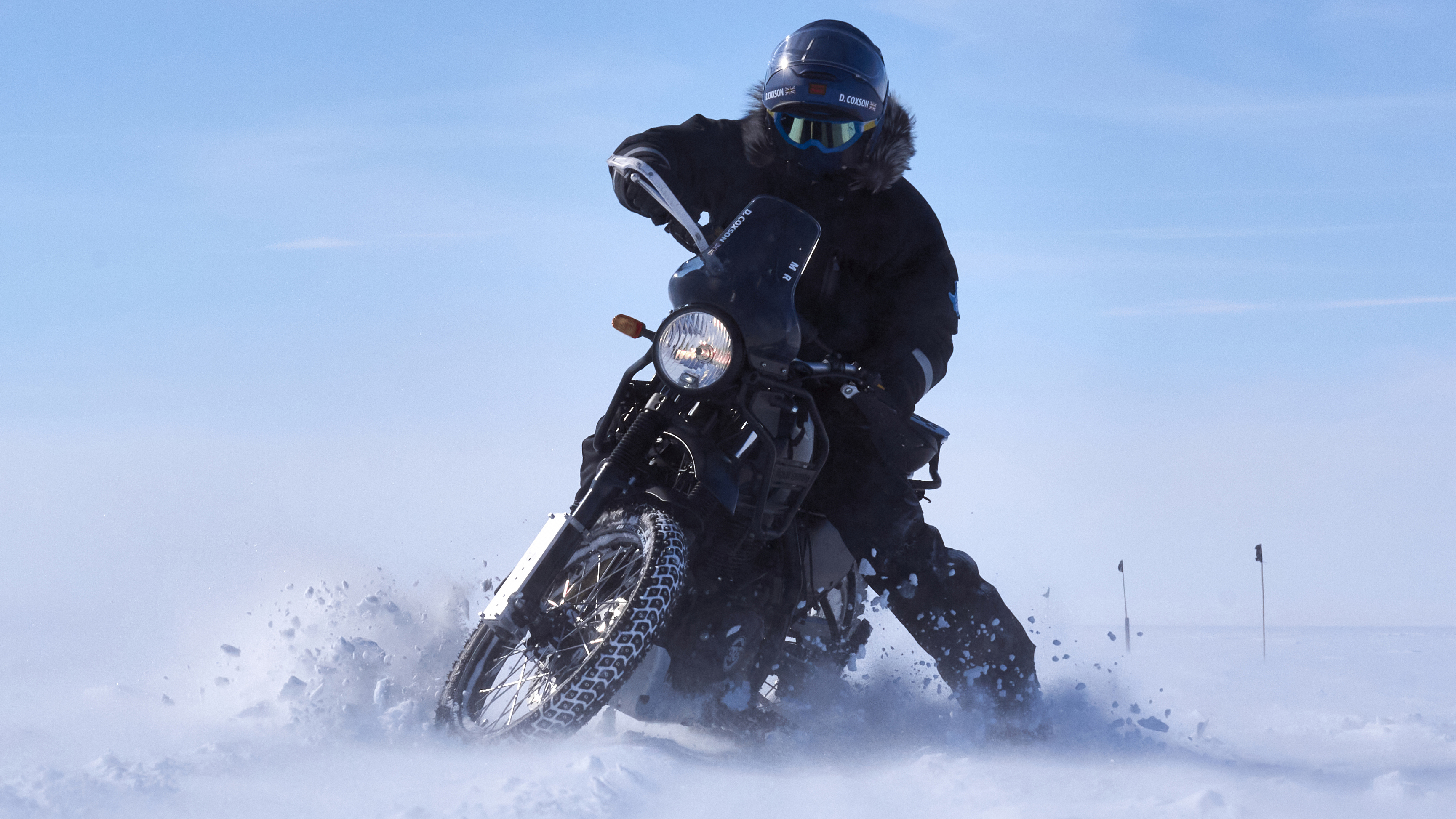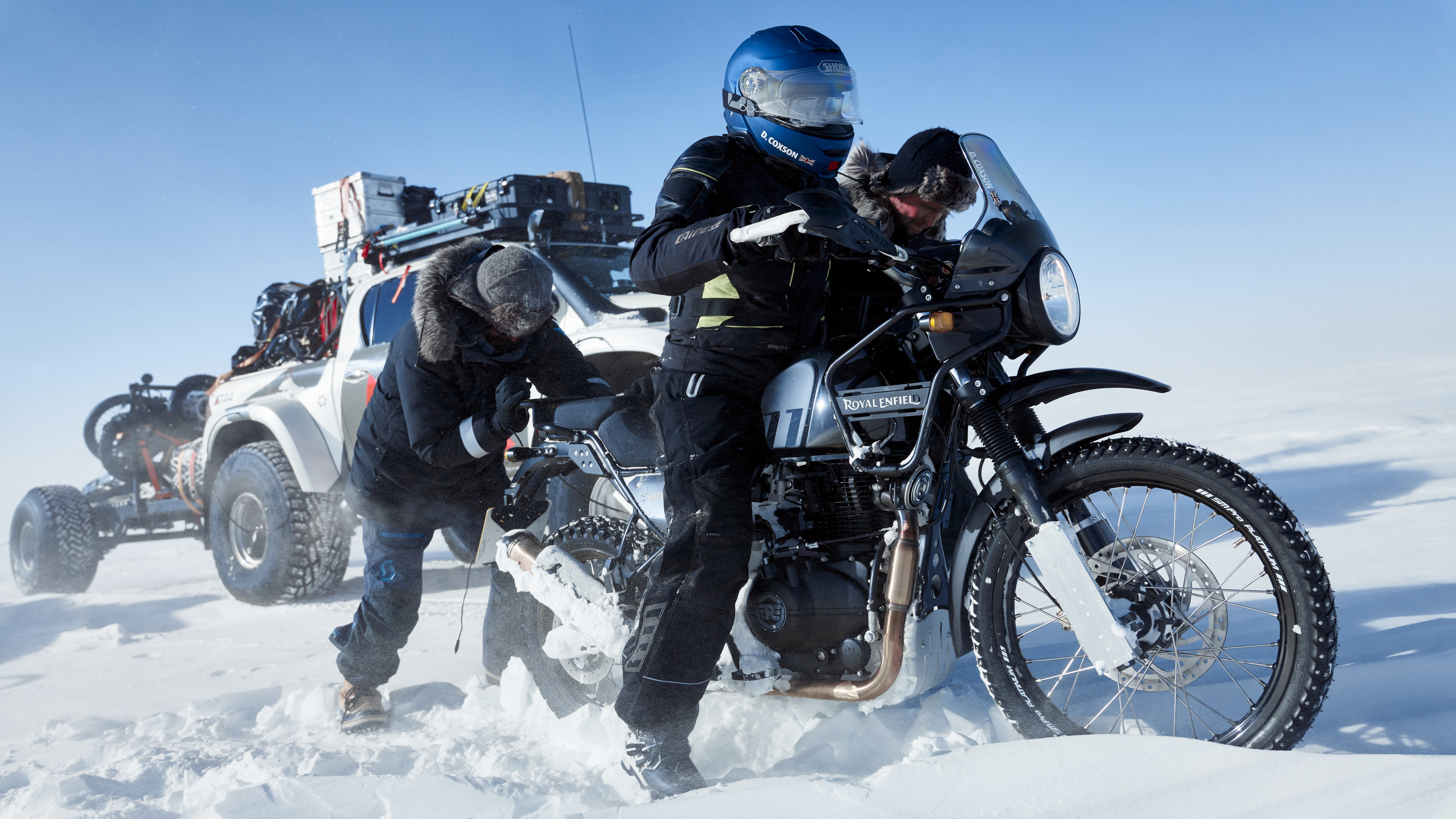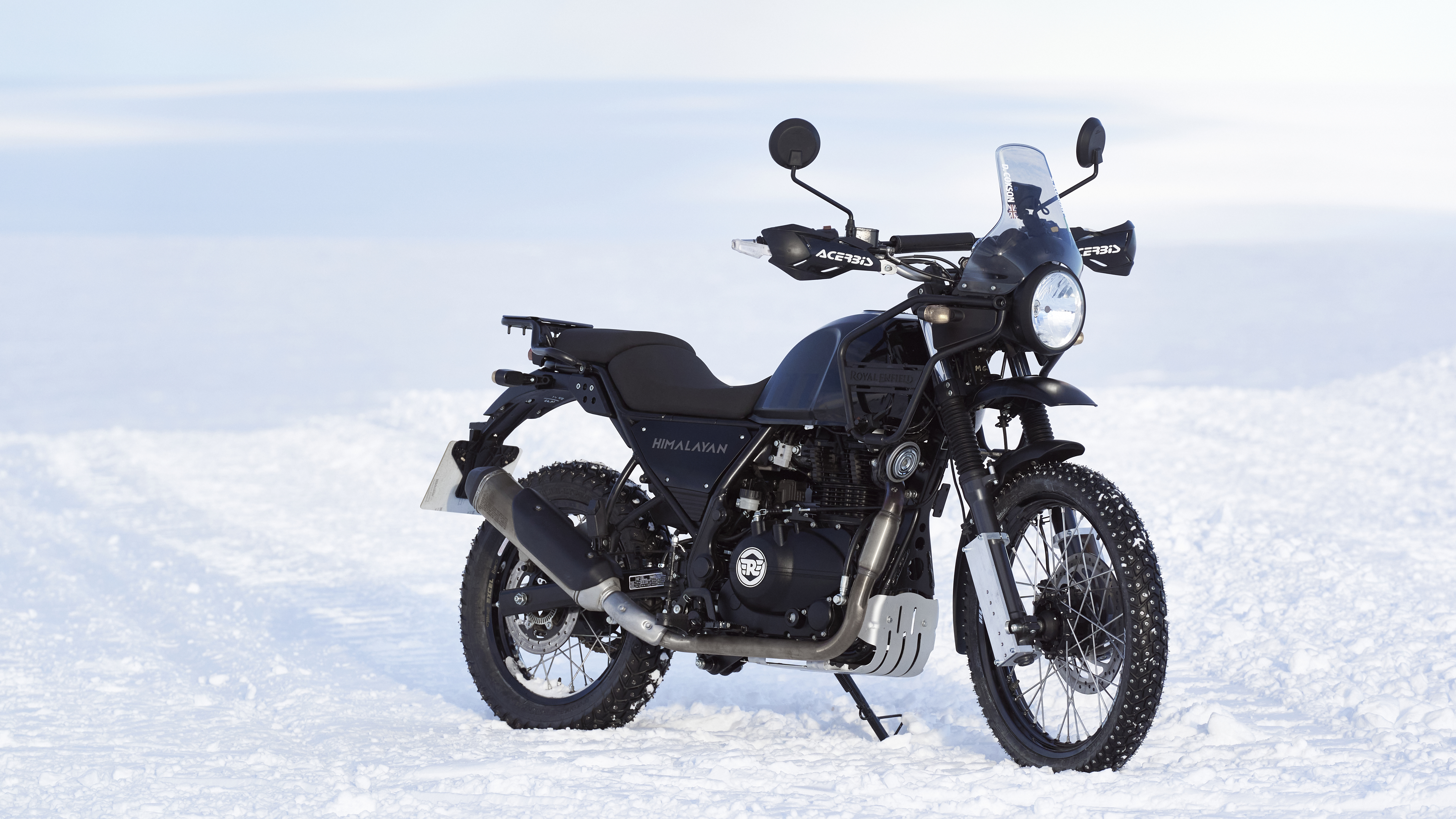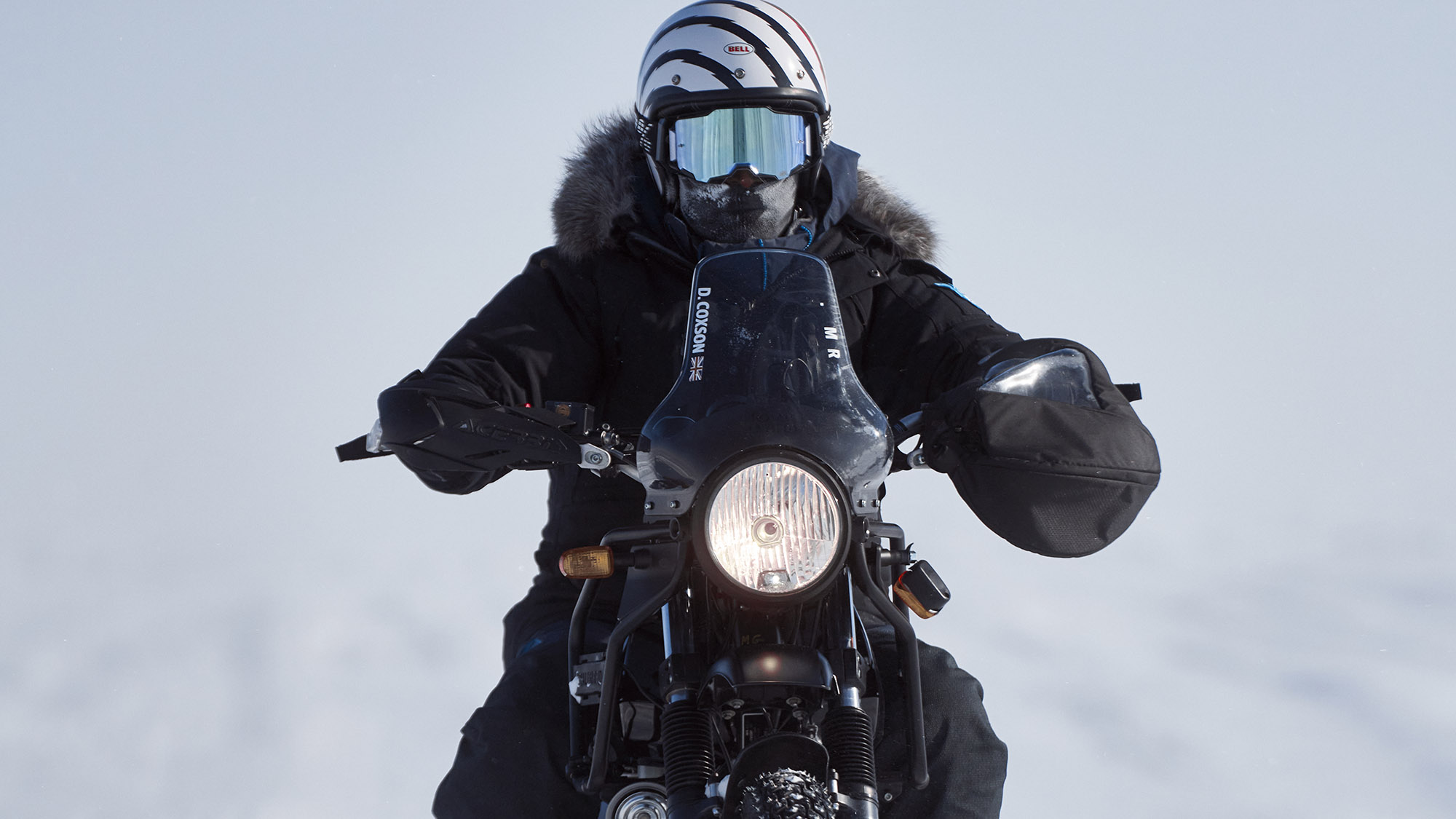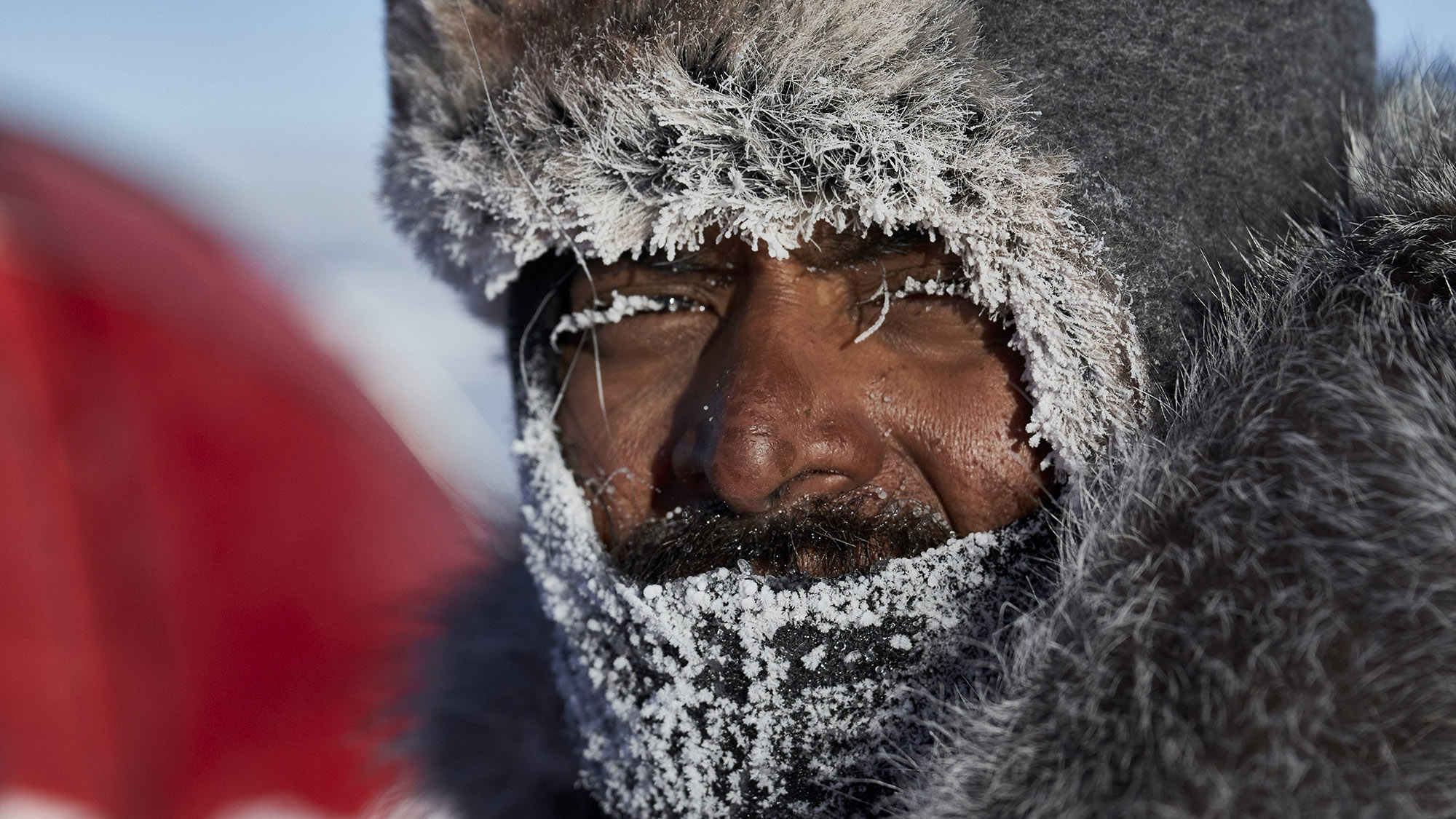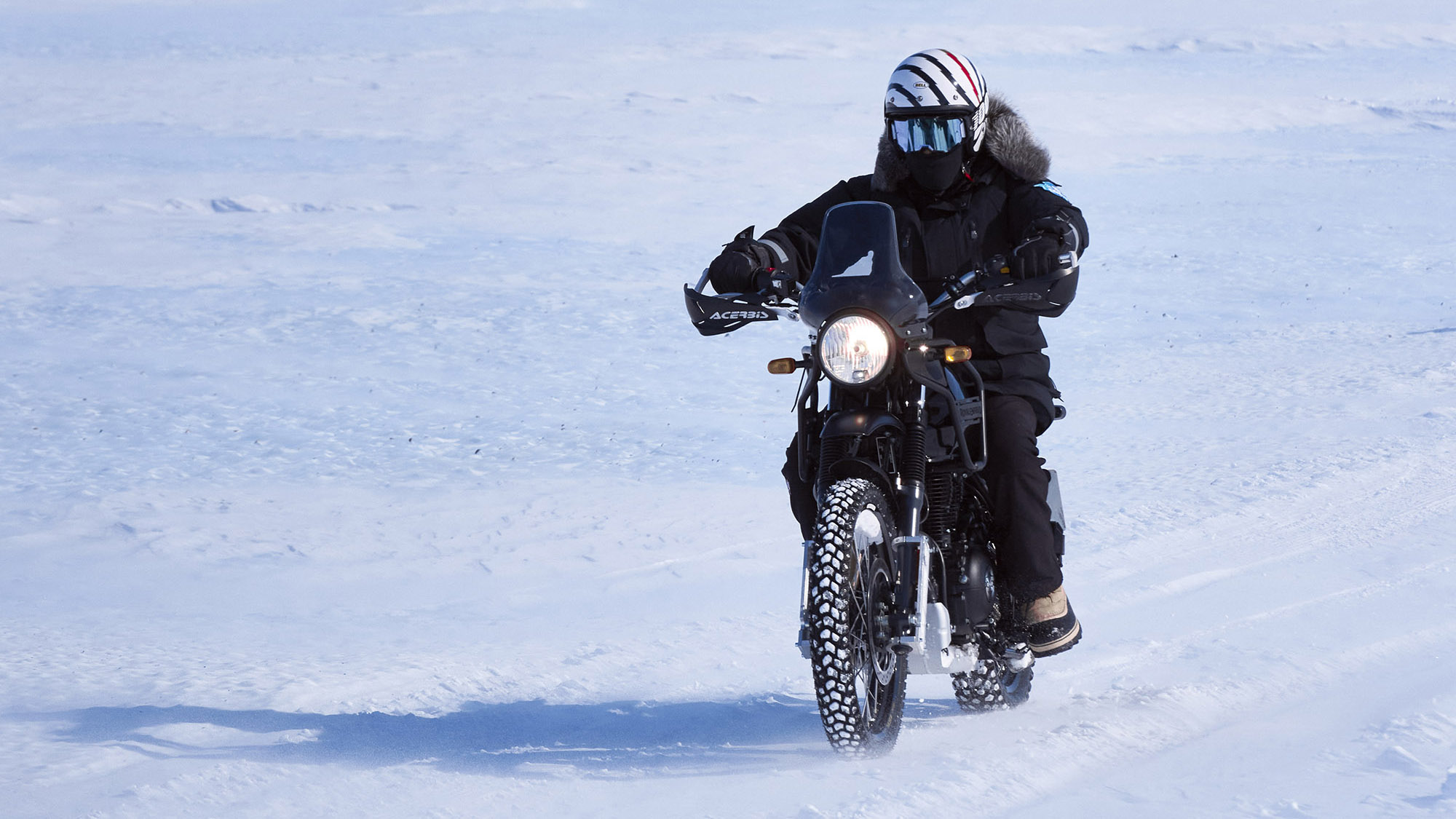
Royal Enfield conquers the South Pole!
Intrepid explorers have completed a gruelling motorcycle ride across the Antarctic on one of the toughest rides possible.
In mid-December, probably about the time you were deciding which trimmings to go with your Christmas turkey, two Royal Enfield staff members were preparing to undertake one of the toughest rides on the planet. Riding a largely standard Royal Enfield Himalayan motorcycle, Santosh Vijay Kumar and Dean Coxson realised a dream in honour of the 120th anniversary of Royal Enfield.
The expedition was named 90° South and was a chance for Royal Enfield to celebrate both the company’s landmark anniversary, as well as the daring spirit of countless Royal Enfield owners who over the years have ridden over, around and across the whole world.
After intense testing and training in Iceland, the adventure began in Novo on the northern side of Antarctica. After four days of acclimatisation, the team then had to make it to the start line for the ride. The 3200km journey took nine days, during which time the team had to endure complete white-outs which lowered visibility to almost zero. Temperatures dipped as low as -50C, with windchill and driving conditions incredibly challenging. All this before the riders had even started their two-wheeled adventure.
The weather was always going to be a challenge, and it became clear that the challenge might not even begin as the team got closer to the planned start point.
Santosh picks up the story: “I could see the weather was going to stop us from reaching our original start point and immediately had to adapt our plan to suit. This was the lowest point on the trip for me as it looked for a moment like we wouldn’t even be able to start the ride, let alone finish it. Because of the tiny weather window available to us, the only thing we could do was change our start point quite dramatically. We came inland from the edge of Antarctica to the point where the weather would allow us to ride and began from there. We adapted the plan, let everyone know we were changing our start point and got stuck in.”
The model used was a Royal Enfield Himalayan, a budget adventure motorcycle with great off-road manners and a ‘go anywhere’ attitude. The motorcycle had very few modifications from standard: just a smaller sprocket to shorten the gearing, and the oil cooler was removed. The team also fitted a high-quality chain and studded the tyres, but that was it.
Dean and Santosh shared riding duties on one motorcycle, with a support team following in an adapted truck capable of carrying the spares and equipment needed across the ice. Clearly the biggest challenge to overcome was the extreme temperature, striking the right balance between keeping warm and still being able to move on the motorcycle was hard to get right.
Dean: “I went down the traditional route of multiple layers like I would wear riding at home in the UK, plus a heated jacket which was fantastic. I started out wearing a full-face helmet, but it kept fogging up, the fog would then freeze, and I couldn’t see where I was going so I swapped to a flip-faced helmet and a pair of goggles, which worked perfectly. Santosh wore a one-piece suit for snowmobiling, then a Parka over the top of that to keep the wind out.”
The interview with Santosh happened while the team was in transit back home, and Santosh appeared on the Zoom screen with frostbite on his face. “I chose to wear a half face helmet and a thick balaclava, which slipped down my face for about an hour during the ride, which is why I now have frostbite on my face. I also made a huge mistake in my choice of gloves. Nothing worked and my hands really suffered.
“Once underway I was relieved to find that riding in Antarctica initially felt easier than the training we’d carried out in Iceland. This moment had been a long time coming, and to finally get underway felt amazing.”
This feeling of elation didn’t last long and both riders crashed more times than they can remember, Dean picks up the story: “I think I had the first crash, thankfully it was a light one, I was pulling up and had almost come to a stop when I just toppled off. I think it was just the cold that got to me as I had three or four of those crashes. My average speed when I was riding was about 25mph when the surface allowed, but in one section I know I was touching almost 35mph when the back end let go and lost grip. I chased it with some corrective steering, but it spat me over the handlebars, and I was on the floor again. Thankfully the motorcycle was fine.”
Santosh’s first crash of many was a bit faster than Dean’s. “I was riding along with plenty of confidence, so I added some speed. It felt like I was going fast to be honest, then I hit some deep snow and the front washed out from underneath me. I landed with a thud on my shoulder and knocked the wind out of myself. It was a little confidence check, a reminder not to get carried away with myself. I’m the kind of person that can channel anger in a positive way so each time I fell off the motorcycle or the cold bit into me a bit deeper I would use the anger to help keep me in the mental zone I needed to be in to keep going.”
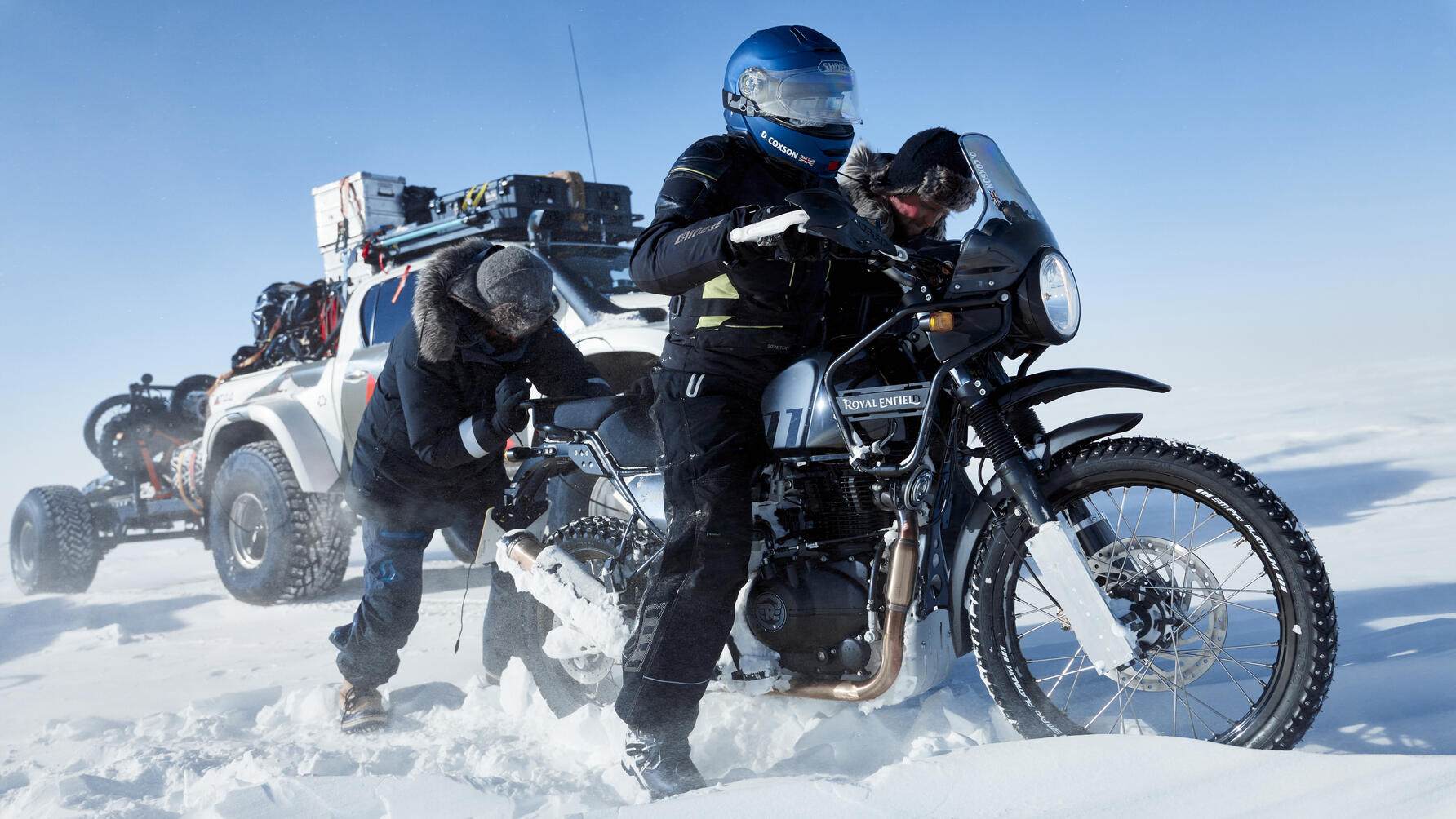
Fuelling the motorcycle with standard petrol was simple enough, but keeping the riders topped up was a little bit more challenging. Dean: “We ate freeze-dried expedition rations which have the high calorific count needed to cope with fuelling cold bodies. I didn’t get on with them, so I mostly ate the peanuts and the extras that the main meals came with. I lost a stone-and-a-half (about 10kg) in just under a month and spent a fair amount of my time in Antarctica dreaming of the Christmas dinner that was waiting for me at home.”
Once the team knew that they’d have to change the start point, the total distance was cut from 478 miles down to about 250 miles. This might sound easy until you consider the ice, snow drifts, -50C temperatures and a complete lack of roads to follow.
Santosh reflects: “We knew we couldn’t hang around because of the weather so rather than breaking the ride up over multiple days like the original plan, the weather window we had was so small that we decided to do it in one hit. The start of the ride was tough, the conditions were incredibly challenging and there were huge snow drifts. The air filter kept filling with snow, and we had to keep stopping to clear it out. I think the highlight of the ride came somewhere in the middle of the route. The motorcycle was just humming along perfectly at about 40kph, the surface was good, and I just got this feeling that nothing was going to stop us from making it to the South Pole. At that moment in time, I had no more apprehension or worry, positive feelings washed over me and it felt amazing.
“After 16 hours of continuous riding, we considered stopping and setting up camp but decided to just push on. We agreed to work on a riding pattern dictated by how we felt rather than riding for time or distance. When I got too tired, or too cold to carry on, I would raise my hand and give Dean the signal to jump on the motorcycle. He would do the same, this meant the motorcycle didn’t stop running for the whole challenge. We knew that the weather we were riding towards was too bad for riding, but we also knew the weather behind us was the same, staying in the tiny window of opportunity to ride was critical for us. When it came to my last stint, I couldn’t feel my hands anymore and could barely hang onto the handlebars. I got off and just told the team that I couldn’t continue because of my hands, but I knew that we would still make it at that stage and was happy to hand over riding duties to Dean.”
After 30 hours of constant riding, the team made it. Dean was almost overcome with exhaustion. “The highlight for me was riding the last leg to the South Pole. It was a 15-mile leg and knowing we were going to complete the adventure gave me a ginormous feeling of satisfaction. I stopped short of the finish, got off the motorcycle and asked Santosh to join me. We started the challenge together and I wanted to finish the ride together, so we pushed the motorcycle up to the pole itself together. I’ll be honest, when we reached the South Pole all the plans I had for celebrating went out the window and I kind of collapsed on the floor with exhaustion. The air was so thin, and it was so fatiguing just moving that I had no energy. I was breathing but couldn’t get the volume of air I wanted into myself. Once I knew we’d completed it, I just had to lay on the floor and breathe.”
For Santosh, there was lots to take in. “I’ve been a lifelong fan of all the great adventurers including Sir Ernest Shackleton. Reaching the South Pole itself allowed me to understand a little bit more about how those guys felt. I took a moment of reflection, I felt like our ride was a tribute to all the great adventurers. It was a personal moment for me. The first call I could make was to my best friend and the brand manager for the Himalayan, Adarsh Saxena. Initially it was him and I that had planned to undertake this ride but due to the pandemic, he couldn’t make it. I wanted to share the moment with him.”
The team judged the weather window perfectly as within an hour of reaching the South Pole, a white-out descended and didn’t lift for four days. The plucky Royal Enfield didn’t miss a beat from start to finish and bar a few well-earned battle scars is ready to face the next challenge that the team at Royal Enfield can dream up for it.
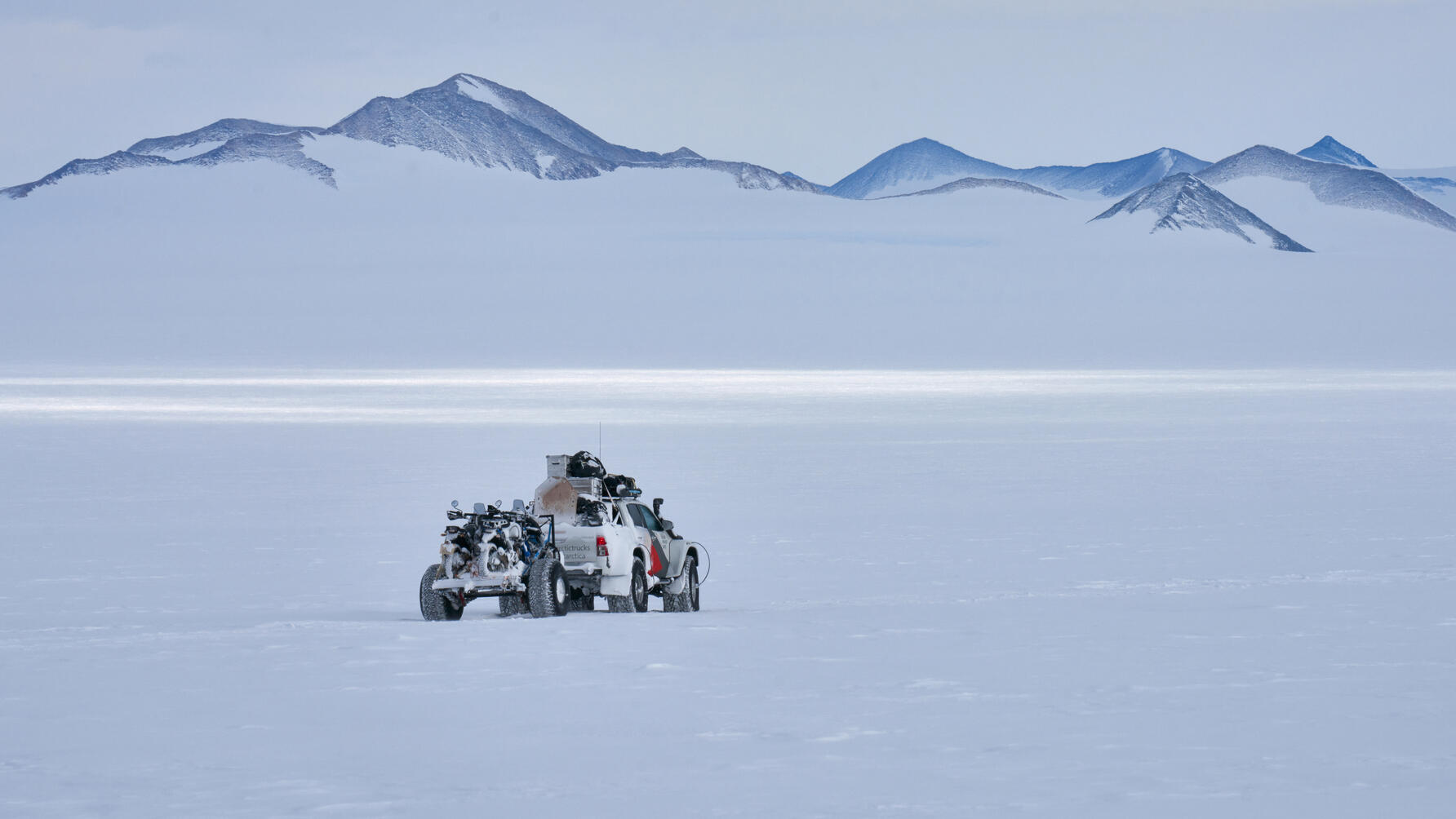
Featured

More from Top Gear
Trending this week
- Car Review
Renault Clio





